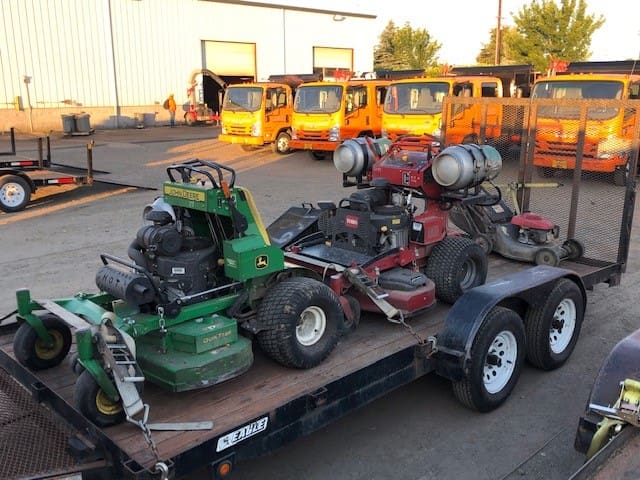
The landscape industry is constantly changing. Fluctuating fuel costs, vehicle prices and indeterminate weather during busy seasons all contribute to uncertainty. But for innovative landscape fleets, uncertainty doesn’t need to be foreboding. Instead, it should be an opportunity for fleet managers to hone in on wasteful procedures and replace them with streamlined processes that both cut fleet operating costs and boost landscape fleet efficiency.
Here are three things all landscape fleet managers need to know now about implementing efficient processes and cutting fleet costs.
Maximize Landscape Fleet Efficiency: The Answers Are in the Data

It’s hard to measure something correctly if you don’t have all the facts and figures. For many landscape teams, the first step in cutting costs is to determine how to accurately gather and aggregate relevant data (which also means determining which data is the most relevant to your business). Then they must take action on these insights. This data can help eliminate unnecessary operating costs by:
- Highlighting gaps in your payroll process
- Identifying cases of fuel card fraud
- Determining where drivers can cut back on idling or optimize routes
- Alerting you to harsh driving incidents, helping to keep drivers safer on the road
Utilizing the right GPS tracking technology provides you with the right fleet data in dashboards and reports, empowering your team to make better decisions to drive your business forward.
Maximize Landscape Fleet Efficiency: Technology is Key to Success
There are more than one million people currently employed in the landscape industry, many of whom are most likely already fairly dependent on technology in their personal lives – from everyday smartphone use to Google maps. And while the landscape industry is no stranger to the digital revolution, bringing enterprise-level data to a traditional industry can be a little daunting.
One of the most effective ways to gather detailed insights about your crews, vehicles, and customers is through telematics. By visualizing where every single vehicle is on the road, tracking when crews arrive and leave job sites and mapping out crew routes throughout a day, landscape team managers can have access to those insights that were previously missing pieces in their daily operational picture. Team leaders can use this data to implement more efficient processes, and all stakeholders can rely on the data to ensure these new processes are working and continue to make proactive adjustments.
Maximize Landscape Fleet Efficiency: Your Customers Matter
At the end of the day, every single decision a landscape team makes should be for the good of its customers. Though shorter routes cut back on fuel costs, they also help crews get to job sites faster. While data-backed vehicle maintenance checks keep a fleet in top condition, they also ensure more crews are on the road for customers where and when they are needed. Tracking how many times drivers slam on the brakes or go over the speed limit helps create a safer team. Additionally it helps keep other members of your community safe.
A data-driven, technology-powered approach to cutting fleet costs doesn’t just impact a landscape team; it impacts their customers as well. If your team is investing in a GPS fleet tracking solution or taking an innovative approach to industry efficiency, let your customers know. People want to know the vendors they work with are actively trying to optimize their processes and provide better customer service. Don’t shy away from talking about your solutions with the public or with customers, especially if it will help increase your reputation or market share.
EDITOR’S NOTE: NALP supplier member Verizon Connect contributed this post.


Comments are closed.